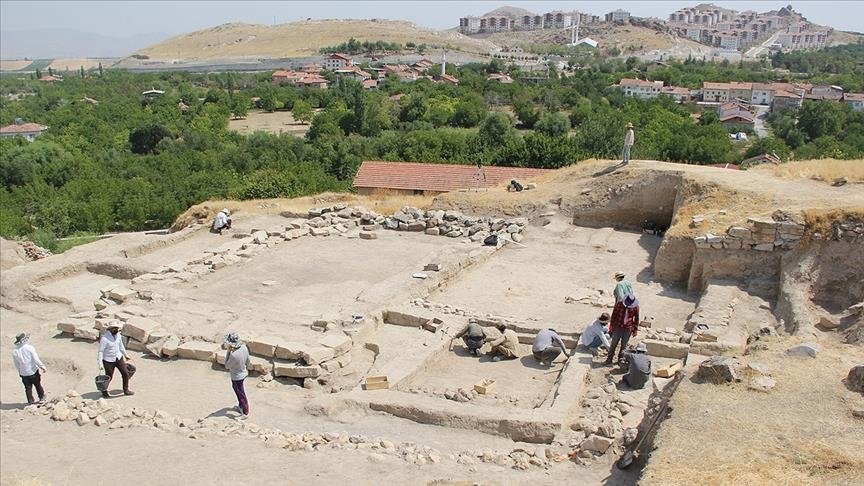MALATYA, Turkey
Dozens of graves and the remains of houses were found during excavations in the 7,000-year-old ancient mound of Arslantepe, a governorate in eastern Turkey said Saturday.
The Governor of Malatya province Aydın Barus visited the mound and received information about the studies in the region from the head of the excavations, Francesca Balossi Restelli, local director of culture and tourism, Cetin Sisman, and the former head of excavation work, professor Marcella Frangipane, the provincial governorate said in a statement.
Teams continue to work to complete the roof project in the excavation area as soon as possible, said Barus.
Twenty-four graves and the remains of six houses, which are estimated to be from before 3600-3700 BC, were discovered during excavations which started Aug. 10 in the mound, said Restelli.
He said that during studies, the team discovered findings from the historical process from the Late Chalcolithic age to the Late Hittite Period.
It is estimated that the artifacts were built much earlier than the Arslantepe Palace and there are indications that the region was populated by the ruling class, he added.
The archaeological mound was added to the UNESCO World Heritage List on July 26.
The decision to add the Arslantepe Mound was made during the Extended 44th UNESCO World Heritage Committee online session in Fuzhou, China.
Arslantepe, meaning Lion Hill, has been on the UNESCO’s World Heritage Tentative List since 2014.
The mound brings to 19 the number of Turkish sites on the UNESCO World Heritage List.
The archaeological site of Arslantepe is located on the Malatya plain, 5 kilometers (3 miles) from the city center and 15 kilometers (9 miles) from the Euphrates River, according to UNESCO’s website.
“It is a four-hectare and 30-meter-high archaeological mound dominating the plain and formed by the superimposition of settlements for millennia, from at least the 6th millennium BCE to the late Roman period,” said UNESCO.










Discussion about this post